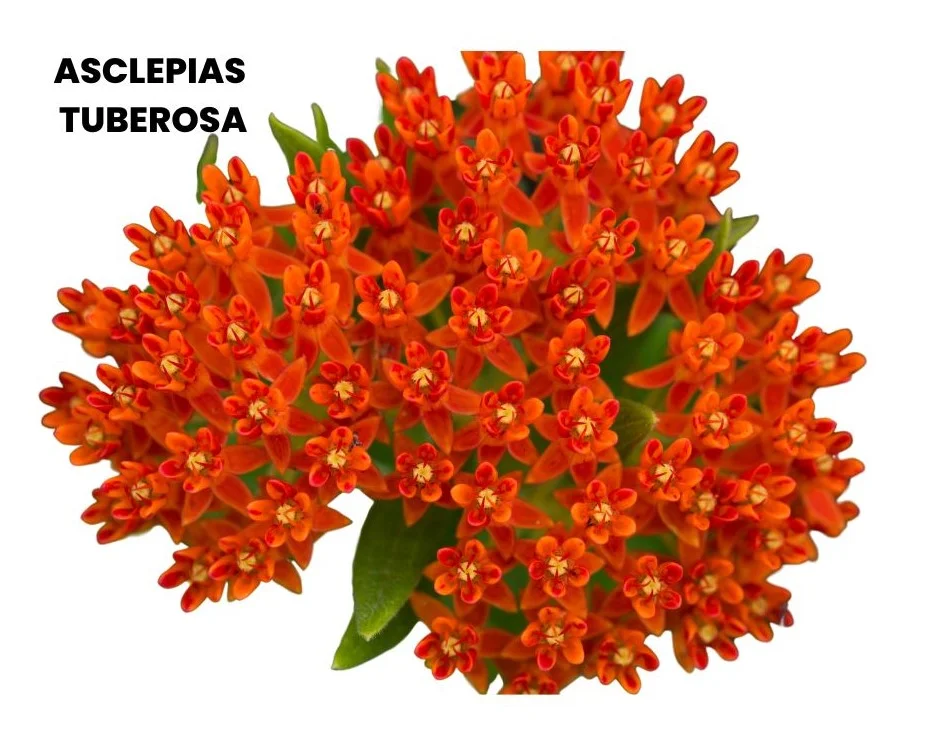Asclepias tuberosa, commonly known as Pleurisy-root, is a homeopathic remedy derived from the plant of the same name.
This herbaceous perennial has been utilized in traditional medicine and homeopathy for its therapeutic effects on the chest muscles and its influence on respiratory and digestive systems.

Table of Contents
ToggleSOURCE INFORMATION
Common Names: Pleurisy-root, Butterfly Weed, or Orange Milkweed.
It is a perennial herbaceous plant native to North America.
Appearance
- It typically grows to a height of 1 to 3 feet.
- The plant features clusters of bright orange to yellow-orange flowers, making it attractive to butterflies, bees, and other pollinators.
- The leaves are alternately arranged and lance-shaped.
Habitat
- Asclepias tuberosa is often found in dry, sandy soils, meadows, and open woodlands.
- It is native to a large portion of the eastern and southeastern United States.
Medicinal Use
- Traditionally, the plant has been used for its medicinal properties, particularly its roots.
- Pleurisy-root earned its name due to its historical use in treating pleurisy, an inflammation of the tissues lining the lungs and chest cavity.
- Native American tribes also utilized it for various respiratory issues and as a diuretic.
Other Names
Besides Pleurisy-root and Butterfly Weed, it is also known by names like Chigger Flower, Fluxroot, Indian Paintbrush, and Orange Swallow-wort.
DRUG PATHOGENESIS
- Chest Muscle Action: Asclepias tuberosa prominently affects the chest muscles, providing relief in conditions like pleurisy.
- Eliminative Action: Known as a general eliminative remedy, it particularly targets the sudoriparous (sweat) glands.
- Respiratory Influence: Indicated for respiratory issues such as bronchitis and pleurisy, aggravated by cold and damp weather.
KEY CHARACTERISTICS
- Chest Pains: Stitching or lancinating pains in the chest, shooting downward from the left nipple.
- Eliminative Effect: Relieves chest pains by bending forward; influences sudoriparous glands.
- Tenderness in Chest: Spaces between ribs close to the sternum are tender.
PARTICULAR DISEASE SYMPTOMS
Headache and Flatulence: Sick headache accompanied by flatulence in the stomach and bowels.
Respiratory Distress
- Painful respiration, especially at the base of the left lung.
- Dry cough causing throat constriction and pain in the head and abdomen.
- Chest pains relieved by bending forward.
Catarrhal Conditions
- Irritation of the larynx with huskiness.
- Catarrh with frontal headache and sticky yellow discharge.
Digestive Disturbances
- Stomach symptoms include fullness, pressure, and weight.
- Flatulence occurring after meals; sensitivity to tobacco.
Rectal Affections
- Catarrhal dysentery with rheumatic pains throughout the body.
- Stools emit an odor resembling rotten eggs.
Musculoskeletal Symptoms
- Rheumatic joints feel as if adhesions are breaking up on bending.
REMEDY RELATIONSHIP
- Comparisons: Asclepias Incarnata (Swamp Milk Weed), Bryonia, Dulcamara.
- Affinities: Chronic gastric catarrh, leucorrhea, dropsy with dyspnea.
- Complementary: Bryonia, especially in pleuritic affections.
DOSE
- Administer Asclepias tuberosa in tincture and first potency.
- Dosage specifics may vary based on individual cases and severity of symptoms.
- Consultation with a qualified homeopath is advisable for accurate dosing.
Frequently Asked Questions
What distinguishes Asclepias tuberosa in terms of key characteristics?
- It is characterized by stitching or lancinating chest pains, relief by bending forward, and an eliminative effect on sweat glands.
Which areas of the body are particularly influenced by Asclepias tuberosa?
- Chest muscles, sudoriparous glands, and respiratory and digestive systems.
What are the indications for Asclepias tuberosa in respiratory conditions?
- Painful respiration, dry cough, and chest pains aggravated by cold and damp weather.
How does it affect the digestive system?
- Symptoms include stomach fullness, pressure, and weight, along with flatulence after meals.
In which cases is Asclepias tuberosa complementary to Bryonia?
- It complements Bryonia, especially in pleuritic affections.
Meaning of Difficult Words
- Sudoriparous: Relating to or promoting the secretion of sweat.
- Lancinating: Piercing or stabbing in character.
- Catarrh: Inflammation of a mucous membrane, especially the respiratory passages, accompanied by excessive secretions.
- Dysentery: Inflammation of the intestines, resulting in diarrhea with the presence of blood and mucus.
- Adhesions: Abnormal union or attachment of tissues; in this context, the sensation of tissues sticking together.
